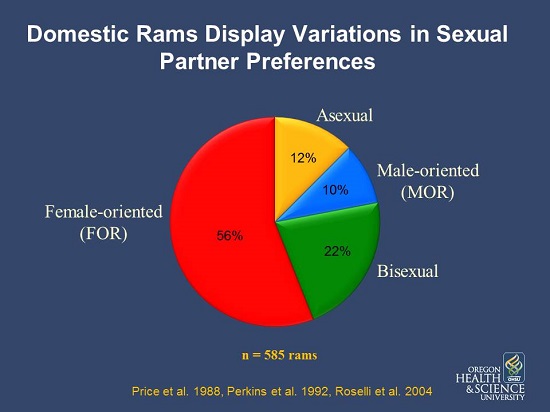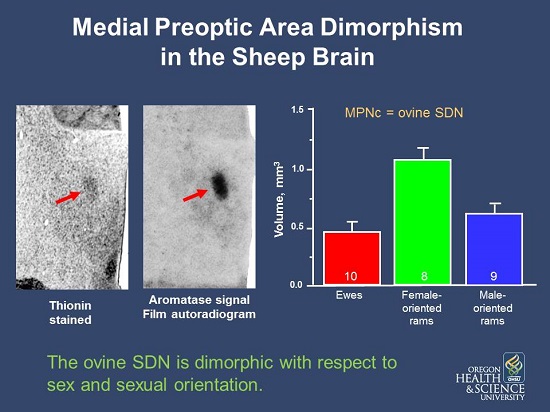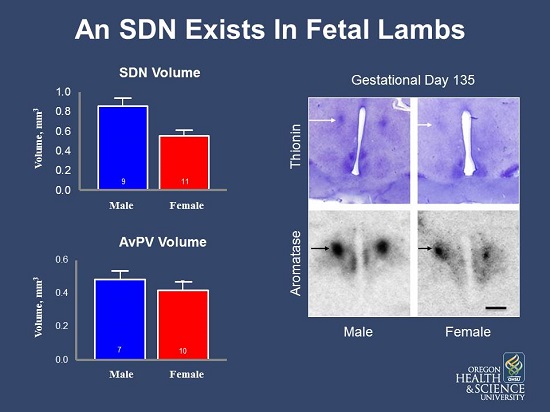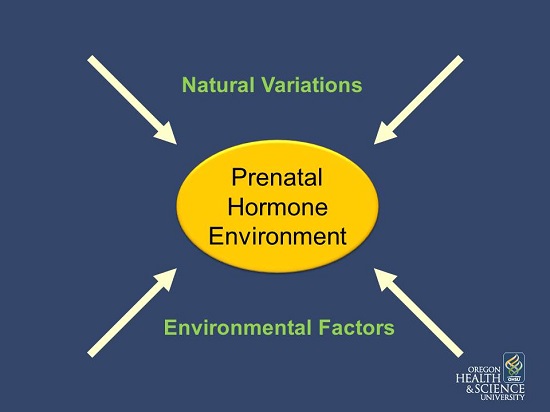Roselli Lab

My laboratory discovered a sex difference in part of the sheep brain called that's known to control sexual behaviors. The difference consists of the size of a cluster of neurons in the preoptic area, which we named the ovine sexually dimorphic nucleus or oSDN. On average the oSDN is 2 times larger in rams than in ewes and expresses high levels of the enzyme aromatase. Approximately 8% of adult rams prefer to mount other rams instead of ewes, and the oSDN in these rams is smaller than in rams that prefer females; more similar to the volume of the oSDN in ewes. The sex difference in oSDN volume is present before sheep are born and controlled by hormone exposure during a critical period in fetal development. Testosterone produced by the fetal testis is responsible for the sex difference in oSDN volume. Thus, it seems plausible to suggest that natural variations in testosterone production and/or disruptions in its actions may reduce the volume of the oSDN and constitute a biological mechanism that predisposes rams to be acquire same-sex attractions. Our studies are exploring this possibility by systematically studying the processes that control sex-specific oSDN development in sheep.



